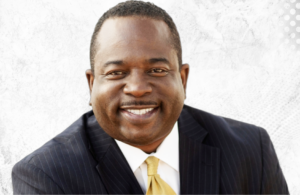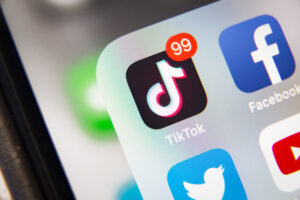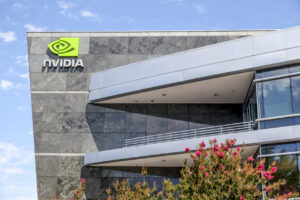Measuring the success of employer branding efforts
Who’s doing employee branding right and how to think about measuring your efforts.

It might seem like a simple enough formula to build the employer brand your organization strives to put out into the world: Define your mission, vision and values internally, add some employee stories to the mix then communicate it on your career pages, in job posts and during interviews. But there’s quite a bit more to it than appears on the surface. And without a way to measure your successes and shortcomings, you can’t truly what’s working and what isn’t.
Thankfully, there are organizations that provide a great playbook for communicators to use as a reference when they’re considering their own employer branding efforts. There are great employees at every company, and it’s incumbent upon communicators to ensure the employer brand platforms what they bring to the organization.
Smart employer branding
Just because a company is large and well-known for what it does or sells doesn’t mean it can’t run effective campaigns that showcase why the organization is a great place to work. Microsoft is a prime example. Several years ago, interns at the tech giant created a musical highlighting what it was like to work at their campuses:
This project holds appeal not only because it shows that Microsoft interns felt able to bring their whole selves to Microsoft and express themselves creatively, but because it can be used as an effective tool for recruitment by highlighting the experiential aspects of working at Microsoft — like the coffee bar.
Spotify is another example of an organization that does employer branding well. Their careers page, Life at Spotify, works because it joins the company’s purpose, commitment to belonging for all, and the way it does business all up front. In addition to listing job openings across the world in a sleek, accessible manner, the page also hosts content that features audio stories and accomplishments of employees, showing a desire to showcase the organization’s people through Spotify’s popular medium.
HubSpot’s careers page succeeds in a similar fashion. It shares what the company does up top, but quickly displays what the company is committed to in terms of employee experience. It also adds a culture code, ensuring that visitors to the page (and prospective employees) know what they’re about.
But you can’t just put your employer branding pushes out into a vacuum. That’s why it’s important to have knowledge of the type of people, or personas, you’re aiming to target with your efforts. In these sorts of instances, the employer branding content that you’re putting out there should aim to reflect the needs of the people you’re employing or trying to bring aboard.
This also underpins the need for collaboration between different departments in the organization beyond communications, including talent acquisition and marketing. By gaining the perspectives of multiple touchpoints, employer branding efforts can be more holistic and well-positioned for success.
Of course, that depends on where employer branding lives in the organization.
Measuring holistically across functions
To learn more, we spoke with our own Ashley Perez, creative project manager at Ragan Communications and a decade-long employer branding expert, to learn where employer branding should fit in an organization, how to measure it, and how comms pros can collaborate with other departments to make it effective.
It’s one thing to have ideas on how to best display your company as an employer, but entirely another figuring out where those responsibilities fit within an organization. When organizations look to build out their employer branding specialty, they need to consider how it fits in with other functions.
“I strongly recommend that any company hiring an employer branding person get buy-in and the time that’s needed to partner with other internal teams,” Perez said. “If they can’t, they need to get the budget for that person or small team to hire externally for that support. They can’t do everything well on their own.”
Employer branding pros must also be able to measure the successes or areas of improvement needed within a campaign. Determinations around how and what to measure should be made based on how a company thinks about their employer brand.
“When I started a decade ago, it was a lot more about general brand awareness. Then it was about lead generation and getting people to apply to your company,” continued Perez “With the onset of COVID three years ago, employee retention and experience became factored in.”
Organizations need to figure out exactly what they’re trying to measure and why. Though the tools and tactics used have a lot in common with traditional marketing, relying too heavily on one metric can be a cause for concern.
Because employer branding can serve as a part of recruitment, measurement activities can be shared by both HR and marketing functions. But it’s important to understand that factors outside of the team’s control can skew numbers, such as layoffs or pulling back job postings. Relying solely on the score of a job review site like Glassdoor, for example, can be tricky after an organization restructures or goes through layoffs.
“If you only focus on one set of numbers and something outside your control happens, it can skew the data and make it hard to determine if you’re making progress or not,” said Perez.
She added that, when possible, employer branding pros should look to find patterns in the material they post and act on them, especially when their teams are lean.
“Sometimes marketers don’t always get what we’re trying to measure. Employer branding should own those metrics.”
Of course, in the absence of a dedicated employer branding team, communicators should be ready to lead the measurement charge and find the common ground by figuring out what metrics make sense for all functions involved. After all, comms pros have the collaborative skills and the metric know-how to get the job done well. It’s up to you to demonstrate how the function works well across teams with a collaborative understanding of the next moves to make.
If you’re interested in learning more about employer branding and internal communications, register for Ragan’s Internal Communications Conference in Seattle October 10-12.







